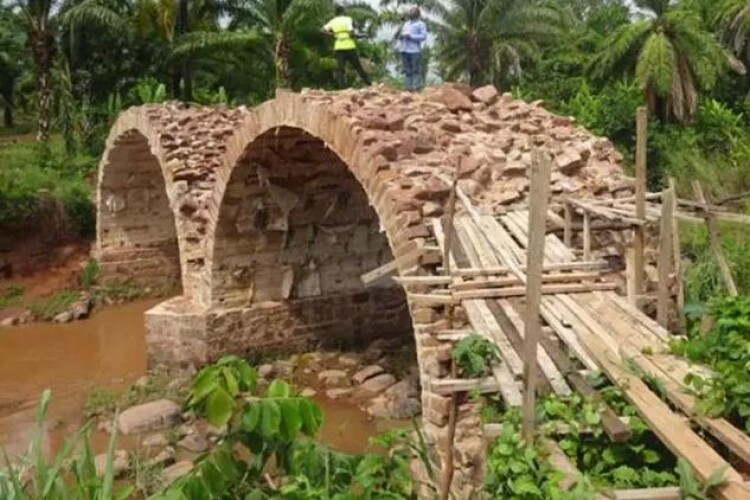The work by a bridge-building charity and the Tanzanian government has been praised by a lecturer at Brunel University who has provided structural advice for the project.
High costs of steel and reinforced concrete and a fast-growing population mean the national government struggles to build much-needed roads and bridges.
Belgian charity Enabel and the Rural & Urban Roads Agency have, in the past four years, built 70 stone arch bridges for villages in Kigoma, North Western Tanzania.
“Stone bridges offer an ultra-low-emission alternative to concrete and steel with minimal maintenance costs,” said structural adviser Dr Adrienne Tomor.
The new stone bridges are built with locally sourced stone, sand and wood and importantly, labour – which are all cheap and in good supply.

“The stone arrives on bike or large pieces cut out of a river bed and the local community dig the foundations,” said Tomor, who teaches civil and environmental engineering at Brunel University London. “They are surfaced with the reddish local soil, murrum, which compacts easily and withstands the monsoon, which is no small ask. No machinery is used, so I have great respect for the builders who, sometimes working in monsoon floods, create these bridges through ingenuity, skill and muscle power.”
Shunning steel, cement and conventional construction techniques for local labour and materials cuts costs by 80 to 85% and lowers carbon emission 50 to 80%, she said. And money spent building them can be poured back into the community, rather than spent on hiring expensive equipment and paying big companies big salaries. Furthermore, having had a hand in their building, local people are invested in the bridges and want to maintain them.
The bridges cost about £35,000 each to build and are 80% funded by Enabel, which has translated a construction manual into Swahili for the roads agency to use. Putting the project out to tender, the agency can afford to build one concrete bridge a year. Involving local people in construction, that same budget can fund 10 stone bridges. It also means local governments don’t have to ask central government for financial backing and can upgrade more rural roads without their budget ballooning.
“Both the design and execution rely on simple rules of thumb that have been tried and tested through time,” said Dr Tomor, who checked quality and structural performance. “Masonry bridges last much longer than concrete or steel, probably minimum twice the life span. There is a compelling case for reviving this incredibly long-lasting material.”
Tanzania’s government is weighing up a plan to roll the project out nationally. “There is much the developed world can learn from this,” said Tomor. “It certainly raises some questions about why masonry arch bridges aren't really considered as an option in the West... especially with our drive for more sustainable construction and reduction in carbon.”
Got a story? Email news@theconstructionindex.co.uk



